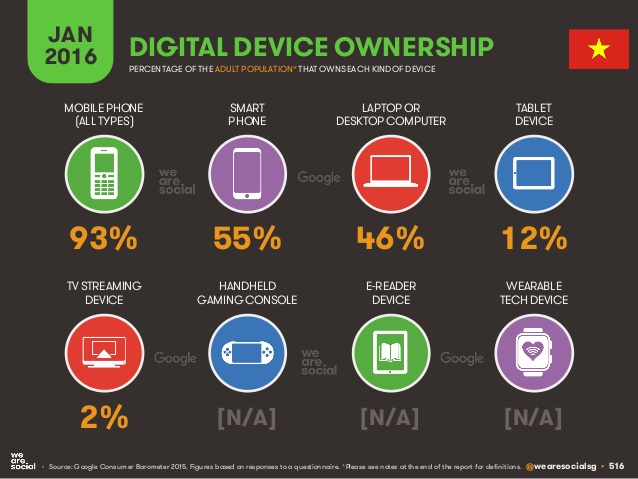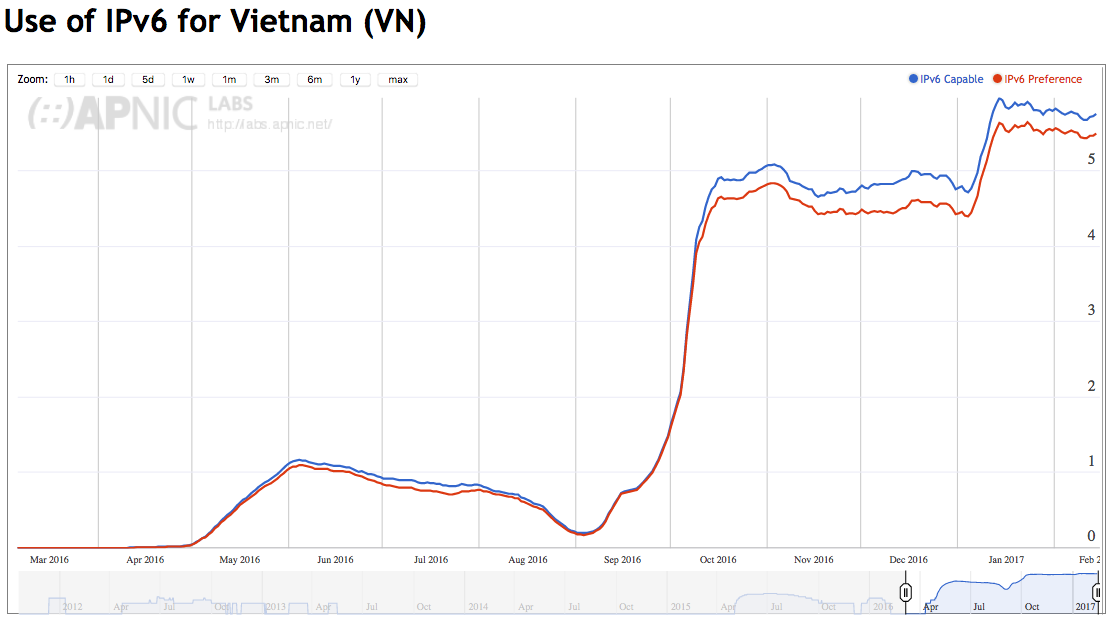
In the coming weeks, Ho Chi Minh City will play host to APRICOT 2017. As is becoming tradition, we’re telling the stories of champions from the host economy’s Internet community to learn about the local history, challenges, and opportunities.
Read the IDSeries, NZSeries and LKSeries from past conferences.
Since 2000, Viet Nam has been the second fastest-growing economy in Asia after China. Much of this growth has been attributed to entrepreneurial ability and work ethic, combined with the return of many foreign educated Vietnamese seeking new opportunities.
Although this growth has slowed in recent years, analysts foresee greater Internet penetration as a means to broaden Viet Nam’s business and educational opportunities, and in turn, sustain the growing middle class.
As of 2015, more than 52% of the 91 million people living in Viet Nam have regular access to the Internet, a jump of almost 40% from a decade ago.
This growth has been thanks to the economy’s young population, the growing demand for smartphones and competitive service costs, particularly among mobile providers. Like many economies in the region, mobile Internet is the most popular means to access the Internet.
According to one report, mobile Internet is expected to generate USD 5.1 billion and create around 145,000 new jobs for Viet Nam by 2020.

Percentage of the adult population that owns each kind of device, as of January 2016. Source: We Are Social
The Internet has been earmarked by the government as key infrastructure to develop the economy. An example of this government support was the recent approval of a program to expand fixed broadband Internet coverage to at least 40% of households and individual subscribers in the country by 2020.
Other goals of this program include having over 60% of Internet subscribers in Viet Nam connected to minimum speeds of 25Mbps by 2020 and ensuring that at least 95% of residential areas will be covered by 3G/4G networks with an average download speed of over 4Mbps in urban areas and 2Mbps in rural areas.
To meet this growing demand for the Internet and the number of personal devices that will surely follow, the Vietnam Network Information Center (VNNIC), has been working closely with local authorities to improve the awareness and capacity of network engineers to deploy IPv6 as part of the National IPv6 Action Plan (2011-2019).
Such efforts have seen a 40% increase in IPv6 delegations since 2011 and bode well for VNNIC’s aim to see the majority of the Internet traffic in Vietnam to be over IPv6 by 2019.
Join us in the coming weeks as we share the stories of some of Viet Nam’s leaders in the industry, and learn how the Internet is continuing to support Viet Nam to achieve great things.
Dr Mai Liem Truc – Opening the door to the Internet in Viet Nam
Chu Thi Thanh Ha – Three steps to becoming Viet Nam’s Digital Transformer
Vu The Binh – NetNam still incubating Internet firsts
Vu Hoang Lien – Taking Viet Nam’s Internet to next level
The views expressed by the authors of this blog are their own and do not necessarily reflect the views of APNIC. Please note a Code of Conduct applies to this blog.

